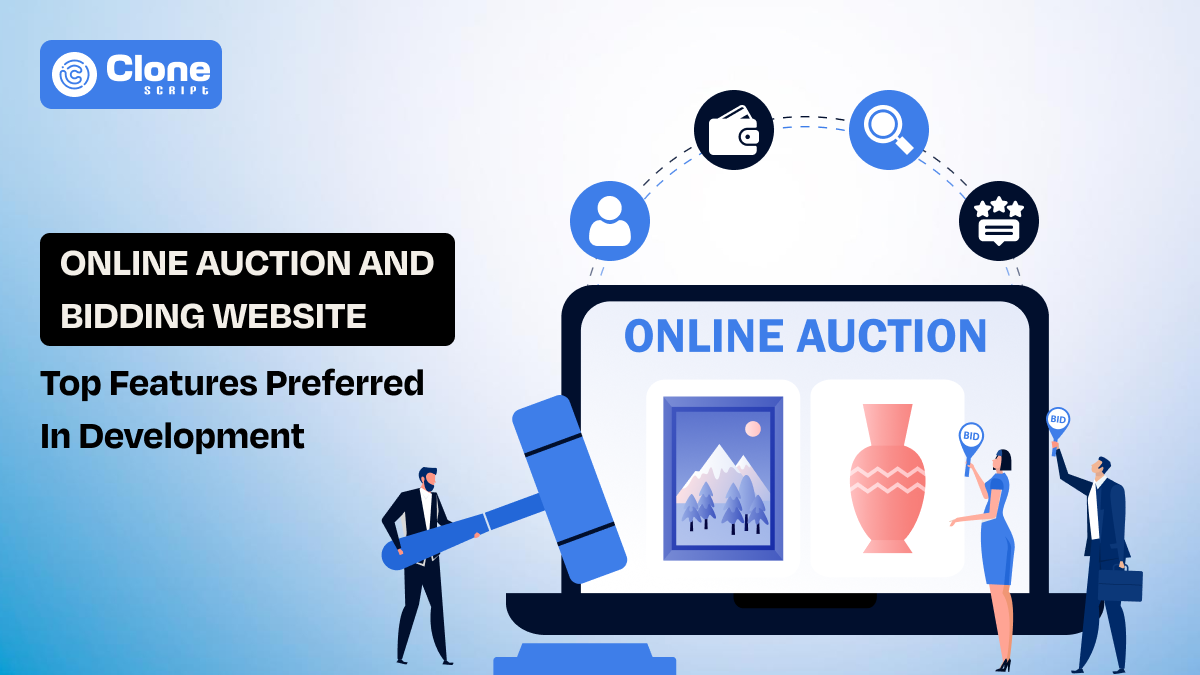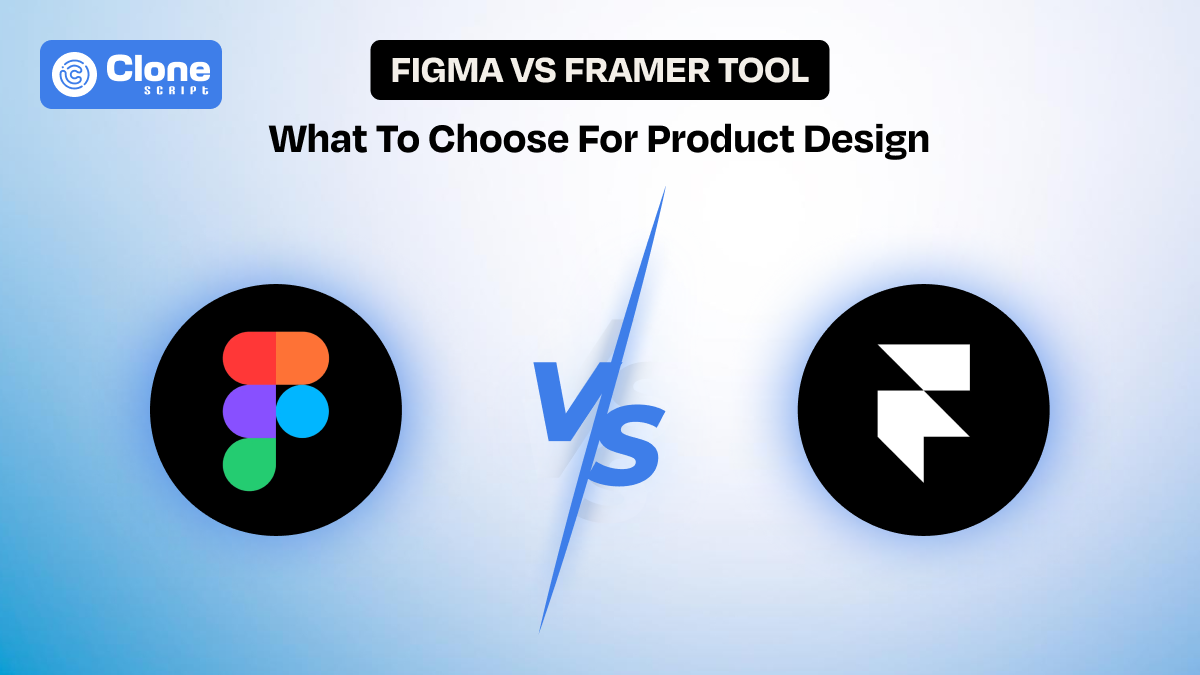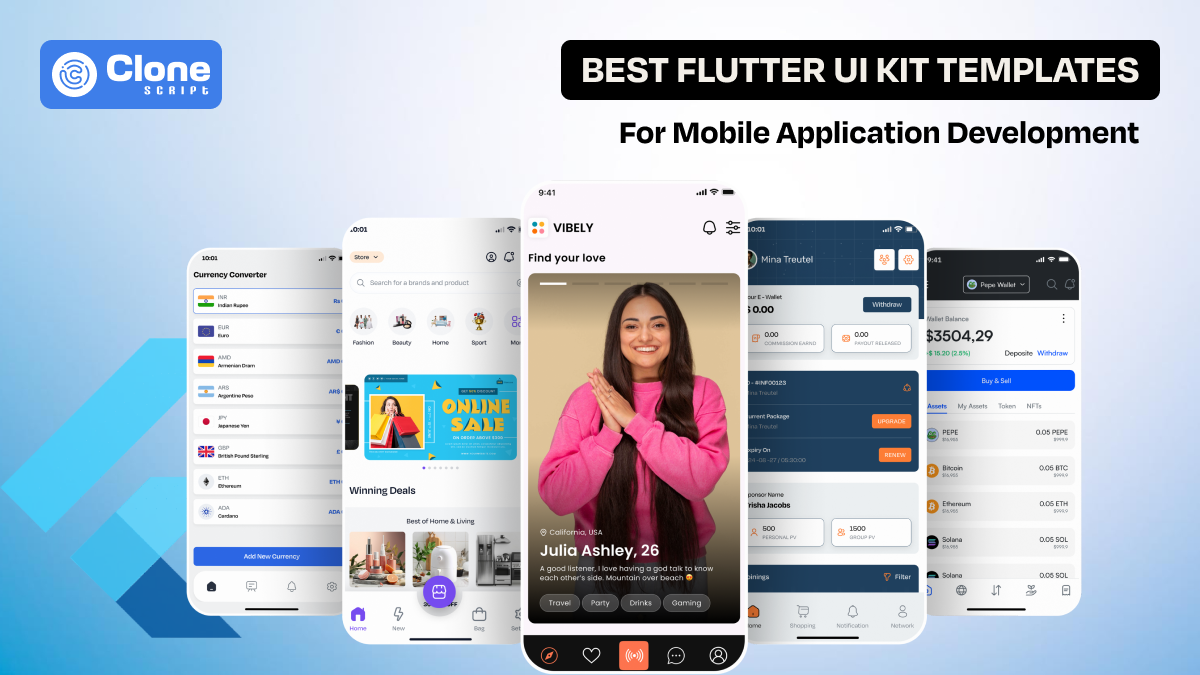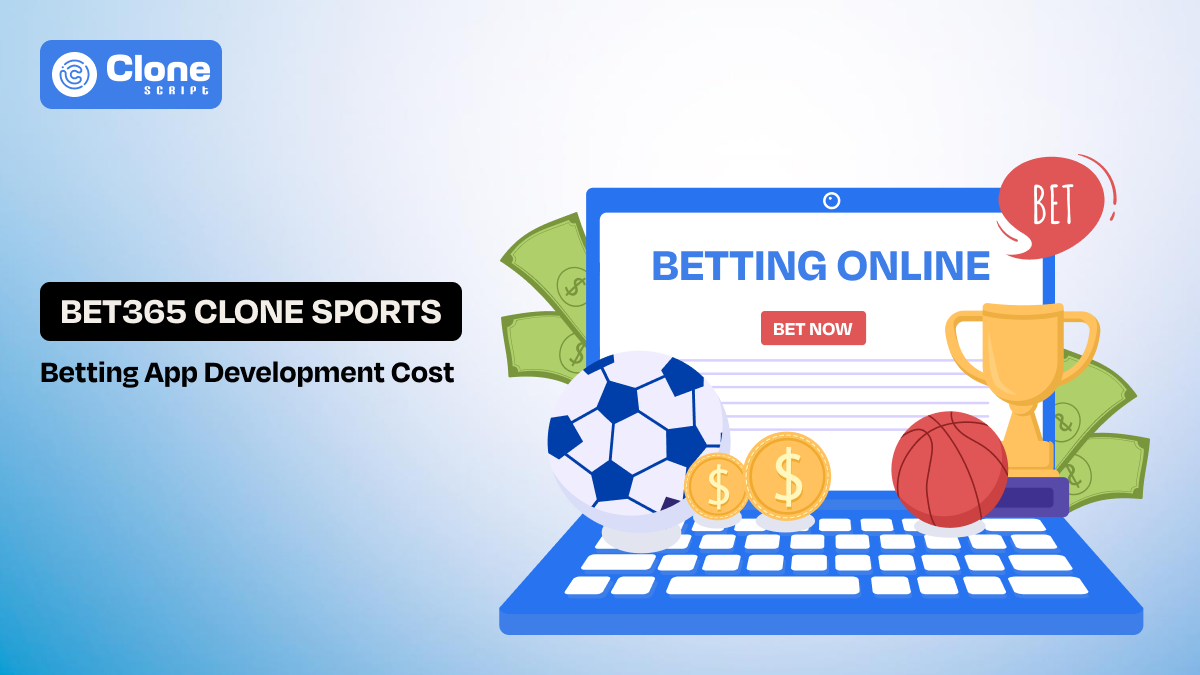Top 12 Features Every Successful Online Auction and Bidding Website Needs
We’re now in a digital era when everything happens with a single click, and the auction industry is no exception. From bidding in front of hundreds of bidders in a common hall to doing it online, the revolution is unexpected. All credit goes to the auction marketplace websites.
The problem is that thousands of platforms start, but they run long time. The issue is that their website does not have features to help both buyers and sellers. In this article, we will talk about what kind of functionalities you have to prioritize in the bidding website development.
What Makes an Online Auction and Bidding Website Successful?
Behind every successful bidding platform, a smart trio of usability, security, and engagement works. These platforms don’t just sell products, but they sell experiences.
Do you have a question about how online auction works? There a only three steps:
-
Buyers register on the website.
-
They participate in the auction and bid.
-
Once they won the bid, they completed the payment.
Now, let’s look at the factors that drive success:
-
Intuitive design: A simple and innovative auction website design interface encourages even first-time users to participate without confusion.
-
Speed and reliability: Auctions happen in real time to increase trust. Any lag or downtime issues destroy the momentum that the platform is optimized for.
-
Secure payment system: Users must trust that their money and data are safe at every step. There’s no chance of privacy trust issues.
-
Transparency: Clear auction rules, visible bid history, and genuine feedback create credibility. It is useful to present that the site is fair enough for conducting an auction.
-
Active communication: Push alerts and personalized messages keep participants informed and engaged regarding new auctions.
When all these elements come together, the website becomes more than a platform. It remains a community where users feel safe, valued, and eager to return.
12 Must-Have Features Every Successful Online Auction and Bidding Website Needs
When designing an eBay-like auction marketplace website, prefer the following features:
1. User-Friendly Registration and Profile Management
First impressions happen during sign-up. If users struggle at this stage, they’ll likely leave before placing their first bid. A user-friendly registration system should be simple, quick, and trustworthy for both buyers and sellers.
It’s not just about collecting user data. It’s about making people feel safe and welcomed right from the start. A well-designed profile section also gives users control over their personal settings, bid preferences, and notifications. The premium bidding website template has this feature.
What to focus on:
-
Offer multiple sign-up options (email, social logins, or phone number).
-
Provide seamless identity verification to build trust.
-
Allow easy access to account updates, preferences, and bidding history.
-
Include profile avatars and badges to personalize the experience.
How to Implement:
Use secure authentication (OAuth 2.0), responsive input forms, and interactive dashboards that let users customize and control their auction journey effortlessly.
2. Advanced Search and Filter Options
When users visit an auction site, they often know exactly what they want, but if they can’t find it quickly, they’ll leave.
Advanced search and filtering options help users navigate thousands of listings with precision and ease. This feature not only improves the overall experience but also increases bidding activity by connecting buyers with relevant products in seconds.
What to focus on:
-
Provide intuitive filters for categories, brands, prices, and auction status.
-
Use predictive search with auto-suggestions to enhance usability.
-
Allow sorting options such as “ending soon,” “highest bid,” or “most viewed.”
-
Display recent searches or saved filters for frequent users.
How to Implement:
Integrate Elasticsearch or Algolia for fast, relevant search results and enable dynamic filtering that updates results in real time without reloading pages. It’s a fact that implementing this feature will increase the auction website development cost, but it’s non-negotiable.
3. Secure Payment Gateway and Transaction System
Security is the foundation of every successful online auction website. Users must feel confident that their money and personal data are protected at all times.
A secure payment gateway integration ensures smooth, transparent transactions between buyers and sellers, while minimizing risks like chargebacks or data leaks.
Do you know the worst case?
Without strong online payment security, even the most visually stunning platform can lose credibility fast.
What to focus on:
-
Support global payment options (cards, wallets, and escrow). You can initiate digital payments in cryptocurrencies as preferred options.
-
Enable multi-currency and instant payment confirmation. Make sure the local currency is supported on the platform, and once the transaction is completed, the message will be shown.
-
Maintain detailed transaction history for dispute resolution. This feature helps buyers and sellers to protect both their rights.
-
Use anti-fraud measures and encryption for sensitive data. To prevent any issues with the real-time auction conduction or payment information, it reduces the chances.
How to Implement:
Connect trusted providers like PayPal, Stripe, or Razorpay with SSL certificates, 3D Secure authentication, and PCI DSS compliance for full data protection.
4. Real-Time Bidding System and Auto-Bid Feature
The thrill of an auction lies in its immediacy. A powerful real-time bidding system creates excitement and competition, while the auto-bid feature ensures users never miss a chance to win. Together, these features deliver a fast, fair, and engaging experience that keeps users returning for more.
What to focus on:
-
Display live updates of current bids and countdown timers. Make sure it looks fair, not unrealistic.
-
Allow users to pre-set their highest bid limits. Design the bidding page interface accordingly to bidders' preferences in mind.
-
Automatically place bids up to the user’s chosen amount. Automation in the auction website brings excitement and an agile way to buy items easily.
-
Ensure real-time synchronization across all devices and users. Whether a bidder sets the bid on mobile, make sure they can see it on desktop too, where they left out.
How to implement:
Use WebSockets or Firebase for instant updates and implement scalable logic for auto-bidding with capped bid thresholds to maintain fairness. This is a backend development task.
5. Product Listings With High-Quality Images and Descriptions
In an online auction, visuals replace physical inspection. That’s why detailed listings with clear images and honest descriptions are vital.
A product listing page isn’t just a page; it’s your product’s first handshake with the buyer. The better it looks and reads, the higher the trust and the more bids it attracts.
What to focus on:
-
Allow multiple high-resolution images per product. Adding generic stock photos is a common product listing mistake. So, avoid it with immediate effect.
-
Provide zoom-in and 360° view options with a 30-50 second video. Presenting the products from every angle will help buyers to bid effectively on items.
-
Include comprehensive details like condition, brand, and seller info. It makes a decision task easier for bidders to bid only on products they are genuinely interested in.
-
Verify listings before publication to maintain platform integrity. This will increase trust in auction participation.
How to Implement:
Optimize media with compression tools and offer a structured listing form for sellers that represents quality standards.
6. Transparent Bidding History and Auction Details
Transparency is what separates reputable auction platforms from questionable ones. A visible bidding history assures participants that every auction is legitimate and fair.
When users can view bid timelines, bidder IDs (anonymized), and closing prices, it increases confidence and encourages repeat participation.
What does it result in?
Your bidding website becomes just more than a marketplace where buyers and sellers come on the same platform.
What to focus on:
-
Display all previous bids with timestamps. Add filters to help new bidders check the most relevant, high, and low bids.
-
Use anonymized identifiers to protect privacy. Don’t mention the buyer's name on the auction page, but use encrypted names for security.
-
Show the number of active bidders and final results. This can be useful in making the decision is the ongoing auction is ok to participate in.
-
Offer downloadable or viewable auction reports. To analyze the auction bidding for maximum results, users can download the listing from their account.
How to Implement:
Store bid data securely in a backend database and display it dynamically through AJAX updates or APIs in real time. Test it before implementing it on the website.
7. Email and Push Notifications
Timely notifications can be helpful. Whether it’s an outbid alert, auction reminder, or payment confirmation, personalized messages keep users informed and active. Notifications nurture user relationships and transform passive visitors into loyal participants.
What to focus on:
-
Send alerts for bidding updates and auction outcomes right from the website.
-
Customize messages based on user preferences. This will highlight what the platforms care about.
-
Support email and mobile push formats. Integrating email marketing will be the appropriate choice for sharing information and promotional content.
-
Use friendly, action-driven language for higher engagement. Invest in professional web copywriting to get conversions as marketing goals.
How to Implement:
Integrate Firebase Cloud Messaging or SendGrid for scheduled and triggered notifications for timely delivery and personalization.
8. Strong Security and Fraud Prevention Features
No platform can be successful without trust. Fraud prevention and security features safeguard your reputation and user community. From encrypted logins to fraud monitoring, a robust defense system ensures users feel confident about every click and transaction.
What to focus on:
-
Enforce HTTPS and SSL certificates across the platform for security.
-
Add two-factor authentication (2FA) for sensitive actions, such as unauthorized login within 30 seconds.
-
Detect and block suspicious IPs or bid behaviors to manipulate the auction.
-
Secure personal data with role-based access control.
How to Implement:
Integrate firewalls, advanced fraud detection APIs, and end-to-end encryption while conducting regular security audits.
9. Admin Dashboard and Analytics Tools
An efficient admin dashboard is the control center of your auction platform. It allows administrators to monitor activities, resolve disputes, and track growth effortlessly. With analytics, they can identify which products perform best, where users drop off, and how to enhance the platform’s profitability.
What to focus on:
-
Centralize user, product, and payment management under a single platform.
-
Display real-time data on traffic and conversions to make marketing strategies.
-
Generate reports for revenue and performance tracking to get information on whether the business is making a profit and what drives profit.
-
Enable quick moderation and content approval tools.
How to Implement:
Use a framework like React Admin or Laravel Nova and integrate Google Analytics or custom BI dashboards for visual insights. Consider the dashboard UI/UX design principles for making a product helpful to auction administrators.
10. Mobile-Friendly and Responsive Design
Mobile users dominate today’s online activity. If your auction platform doesn’t perform flawlessly on smartphones and tablets, you risk losing half your audience. A responsive design helps to maintain consistency, accessibility, and smooth functionality across all devices and screen sizes.
What to focus on:
-
Use flexible layouts that adapt to mobile and desktop. Implement responsive web development practices to manage the process.
-
Optimize buttons and menus for touchscreens. Keep smartphone users in mind and visualize where they click more to make your website useful.
-
Compress visuals for faster loading times. Use WebP and PNG format images to reduce the website load and offer an engaging user experience.
-
Ensure compatibility with all browsers and devices. From Chrome to Bing and iPhone to Android, the auction platform is easy to use.
How to Implement:
Build the website with frameworks like Bootstrap 5 or Tailwind CSS. Then, run usability tests using Google’s Mobile-Friendly Test.
11. Integration With Social Media and Marketing Tools
Social media integration turns users into promoters. It lets them share their wins, favorite listings, or auctions with friends, creating organic reach. When correctly paired with marketing tools, it helps boost engagement and attract new bidders effortlessly.
What to prioritize:
-
Add share buttons for major social networks like Facebook, LinkedIn, X (Twitter), Telegram, etc.
-
Use login via Facebook or Google to simplify onboarding. This is a common option to get maximum users to register on the online bidding website.
-
Integrate remarketing pixels for ads. To get more ROAS from the visitors who previously visited your site, it helps you to approach them again.
-
Sync auction updates with email marketing campaigns. It helps you to send the bid-winning message or payment confirmation directly to the bidder.
How to Implement:
Use APIs from Facebook, X (Twitter), and LinkedIn, and connect with CRM or email tools like Mailchimp for automation.
12. Reviews, Ratings, and Feedback System
User reviews are the main component of any trusted auction website. They guide future buyers, hold sellers accountable, and create transparency within your platform. A well-structured feedback system builds community credibility and helps identify consistent top performers.
What to prioritize:
-
Allow verified users to leave feedback after each transaction.
-
Display overall seller ratings fairly. Don’t allow manipulation.
-
Use a moderation system to prevent spam or abuse from losing the platform’s credibility.
-
Encourage both positive and constructive reviews while answering them professionally.
How to Implement:
Develop a rating model linked to completed transactions and enable admin moderation for authenticity verification.
Does the Premium Auction Website Template Have These Features?
The BidZone HTML Template serves as a robust starting point for creating a dynamic and engaging online auction platform. Its clean structure, responsive design, and user-focused layout make it easy to build functional, scalable, and visually appealing auction websites. The features deliver a seamless experience for both buyers and sellers.
Key features;
-
Fully responsive, mobile-optimized design
-
User-friendly registration and profile pages
-
Auction listings with live bidding sections
-
Bidding history and product details pages
-
Light and dark theme support
-
Clean, developer-friendly HTML and CSS structure
-
Easy customization for future integration (payment, analytics, or notifications)
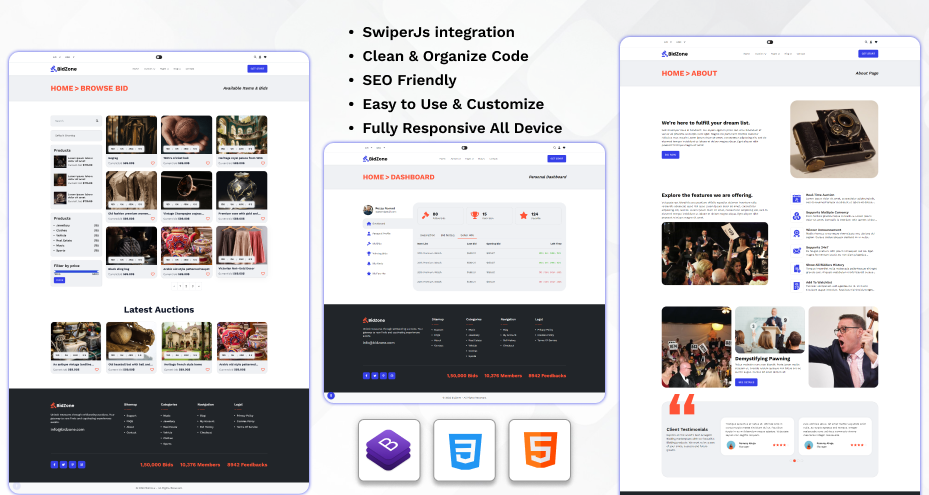
Use the BidZone auction template for front-end website development, and once you integrate with a backend, it’s ready to go live. Use this agile web development solution now.
Conclusion
The journey to building a successful online auction and bidding website is about more than technology. Every feature we’ve discussed plays a vital role in shaping user satisfaction and long-term success. Whether you’re building from the ground up or starting with a professional template like BidZone, focusing on the right functionalities ensures your platform stands strong in a competitive digital marketplace.
Remember, the goal isn’t just to launch a website. It’s to create an ecosystem where every user feels secure, excited, and engaged.
 BTC - Bitcoin
BTC - Bitcoin
 USDTERC20 - USDT ERC20
USDTERC20 - USDT ERC20
 ETH - Ethereum
ETH - Ethereum
 BNB - Binance
BNB - Binance
 BCH - Bitcoin Cash
BCH - Bitcoin Cash
 DOGE - Dogecoin
DOGE - Dogecoin
 TRX - TRON
TRX - TRON
 USDTTRC20 - USD TRC20
USDTTRC20 - USD TRC20
 LTC - LiteCoin
LTC - LiteCoin

